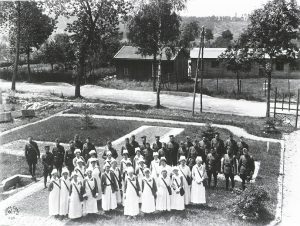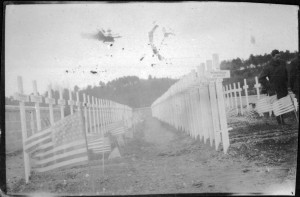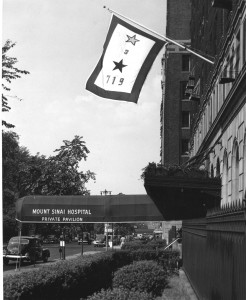The Hospitals of the Mount Sinai Health System in the First World War
April 2017 is the 100th anniversary of the entry of the United States into World War I. Like many institutions in American society, the American hospital system and its doctors and nurses were rapidly mobilized to join the war that had been raging in Europe since the summer of 1914. The Mount Sinai Archives has now installed a display in the Annenberg Building north lobby outlining the activities of the hospitals in the Mount Sinai Health System.
In New York City, The Mount Sinai Hospital, St. Luke’s Hospital and The Roosevelt Hospital (today’s Mount Sinai West) all contributed to the war effort by establishing overseas units affiliated with their respective hospitals, and many doctors at Beth Israel Hospital volunteered individually. The records, photographs and correspondence on display in these cases reflect the experience of a war that defined a generation.
For the medical officers and administrators in charge of overseas hospital units, organizing effective hospital service on a scale never before seen was an immense logistical challenge. And for the individual doctors and nurses working with patients, who saw at close hand the terrible destruction inflicted by new methods of trench warfare and aerial combat, all while dealing with a world-wide pandemic of influenza, the war was an experience of medicine at its most fundamental, as they struggled under harsh conditions to relieve human suffering.
The items on display include images of the staff from the hospitals in their World War I roles; a scrapbook from Marion Moxham, a nurse from Ireland who joined with the Mount Sinai unit, Base Hospital No. 3; letters home from physicians to the Beth Israel Hospital administration; dog tags; a medal that was awarded to members of the Mount Sinai unit; images of the wounded and wards of St. Luke’s Evacuation Hospital no. 2 and a photo of the mascot of the Roosevelt Hospital group.



